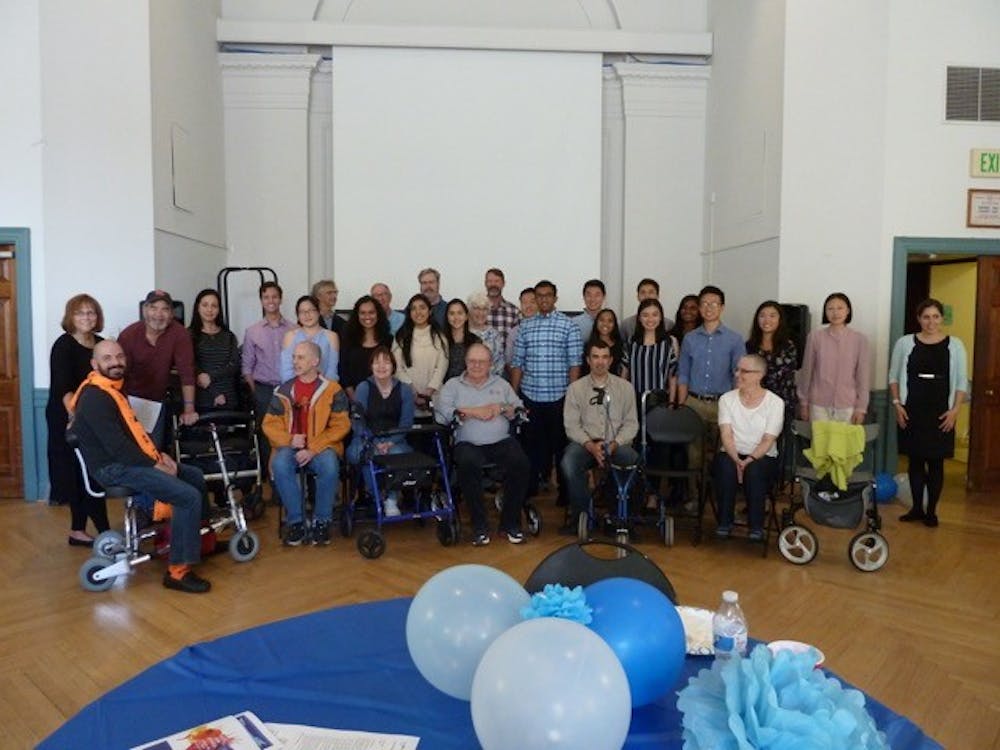On Saturday, Oct. 28, Ataxia Ambassadors at Hopkins hosted their annual Arts for Ataxia event. Ataxia describes symptoms of poor coordination and difficulty with fine motor skills.
The gathering was an opportunity for persons with ataxia, caregivers and volunteers to interact and listen to performances.
In addition, for the first time, the event hosted a speaker and a discussion panel.
Senior Rohith Bhethanabotla, the president of Ataxia Ambassadors, explained the goals of the annual event.
“The main purpose of the event is twofold, to host a community event for people with ataxia in the Mid-Atlantic area and raise awareness about the disorder to our undergraduate students who help volunteer,” Bhethanabotla said.
The featured research speaker was Amanda Therrien. Currently a postdoctoral fellow at the Kennedy Krieger Institute, she works with Amy Bastian in the Motion Analysis Lab, studying reinforcement learning and its potential to help patients with cerebellar ataxia.
Her presentation began by introducing cerebellar ataxia.
This disease is a degenerative neurological disorder which affects muscle control and coordination, resulting from a dysfunctional or damaged cerebellum.
The cerebellum is the specific part of the brain with the function of controlling motor movement and coordination. Many symptoms of cerebellar ataxia mimic those of being drunk, including slurred speech, blurred vision, uncoordinated gait and parallelism.
Much of Therrien’s talk concerned recent research on the impact of ataxia on goal-directed movements, such as reaching for an object. She explained that studies comparing the movement of those with ataxia and those without suggested that the brains of ataxia patients often incorrectly estimated the weight of a limb, leading to difficulty with motor skills.
Since there is currently no treatment for ataxia, and scientists do not fully understand the disease’s underlying cause, patients have to rely on physical, occupational and speech therapy, are used to manage its effects. Unfortunately, these therapies are unsuccessful in a significant number of patients.
“Cerebellar damage impairs the dominant mechanism for learning,” Therrien said.
Instead, researchers in the Motion Analysis Lab have begun trying a method called reinforcement learning, in an attempt to bypass learning mechanisms that involve the cerebellum.
The Arts for Ataxia event also included a discussion and Q&A with four members of the Johns Hopkins Ataxia Center Advisory Board: Ed Dixon, Brian Sullivan, Paula Gill and John Cernosek. Dixon, Sullivan and Gill’s spouses were all diagnosed with ataxia, while Cernosek was diagnosed with Friedreich’s ataxia 14 years ago.
The four panelists discussed the realities of life with ataxia.
“When you talk about the important parts of your identity, ataxia comes up in the first four or five things,” Sullivan said, explaining its impact.
One focus was the individuals’ experiences with doctors, both positive and negative.
“Never assume you [the doctor] know more than the patient,” Cernosek said. “No matter how many books you’ve read, no matter how many years of research you’ve done, we’re living it every day.”
Another theme during the discussion was the importance of interdisciplinary research. Two fields at the center of this are neuroscience and genetics since ataxia can be hereditary.
Therrien shared the importance of cross-departmental research.
“[I’m] a big proponent of disciplines working together. It’s the best opportunity to come up with new ideas,” Therrien said.
In addition to the speakers, the event featured performances by three student groups. Flutist Michelle Chung and clarinetist Melissa Chang, who make up the duo MC2, performed first, followed by the a cappella group Adoremus and the string quartet Wu-Yang CLAnne.
Volunteers at the event, who came from the Ataxia Ambassadors club, learned not only from the presenters, but from speaking with the patients and caregivers themselves.
“At first I didn’t know what to expect at all,” Ryan Teshima, a freshman member of Ataxia Ambassadors, said. “But once we got a chance to talk with the patients, listen to their stories, and hear the panel speak, I thought it was a very eye-opening experience, being able to hear about what it’s like living with ataxia.”
This year, the event organizers worked with the Mid-Atlantic ataxia network and Donna Neuworth, the ataxia department community relations coordinator, to increase attendance.
In following years, the club is also interested in having the event coincide with International Ataxia Day, in late September.
“Overall it made me really happy to see the interactions between everyone in attendance,” Bhethanabotla said.





